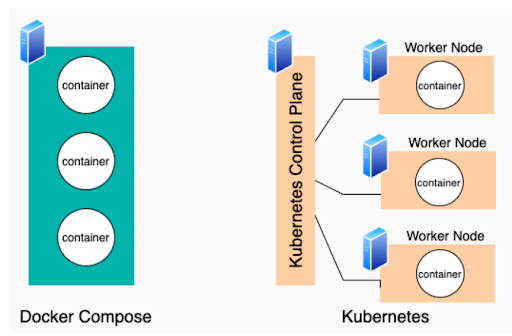Best 7 Reasons to Use Golang for Developing Enterprise App

Golang is an excellent language for backend development. Developers just dig the sheer raw performance of the language and super-fast concurrency. Thus, it is widely used for systems programming, cloud computing, designing large scalable servers, and more. Today, Golang for mobile app development has gained significant traction, especially for developing enterprise apps. But what are the reasons behind it? Come let’s find out. If you're interested in creating robust and efficient mobile applications, Golang can be a great choice.
1. Open-Source Language
- If you are looking for a language that focuses on simplicity and reliability, then you should opt for Golang, which is an open-source language. Open-source languages offer the facility of technology agility, and it helps enterprises start small and scale as per requirements.
- When Google created Golang, it gave developers the freedom to contribute to the development of the project. One can address the existing bugs and resolve the issues, enhance the performance, and suggest improvement proposals. This is because you will easily get access to the source code of Golang on GitHub.
- In addition to this, open-source languages tend to be inexpensive than proprietary solutions. Thus, you get access to superior capabilities and share powerful resources (tools, packages, libraries, etc.) with others.
- Furthermore, Golang is ideal for developing cross-platform enterprise apps. This means that if you write a code on Windows, you can easily run it on Linux or MAC systems.
If you take a look at the graph of people showing interest in Golang over the past one year (2021-2022), you will see that the curve is increasing.

2.Impressive Raw Performance
- Golang is statically typed and a compiled language. Static typing typically produces compiled code that runs more rapidly because the compiler can produce optimized machine code when it is aware of the precise data types being used.
- Furthermore, it has a very few keywords and small syntaxes. The language semantics have been designed in such a way that it takes very less compilation time. Golang takes very less start-up time and has efficient dependency management. The compiler generates one executable file, and you can upload from anywhere.
- As part of its core, Golang provides a unique CSP (Communication Sequential Processes) architecture that makes it simple to use Goroutines to support concurrent code execution in parallel processing.
- The goroutines are lightweight threads that help in management and execution of several tasks simultaneously. And the channels happen to be the media via which goroutines exchange different data.
As you can imagine, Golang is highly scalable and is applicable for designing apps. Thus, developers are using Golang for app development more and more.

3. Easy to Learn
- Programmers who have a background in C or Java, will find it easy to understand Golang due to similar syntax to C. Moreover, Golang has minimalistic features which is an excellent point for beginners learning the language from scratch.
- In addition to this, it is very easy to read, which means you will be able to decipher what others are writing. And you won’t have to spend time browsing through reference documentation to understand the code.
- The language has enough libraries, tools and packages that programmers can take advantage of for coding. Developers have mentioned how useful GORM library, Gen tool, Goose and cli packages have been. They are also fond of Go Kit, Vegeta, Authboss, etc.
4. Designed for the Cloud
- If you observe carefully, you will see that most of the apps are cloud-native today. And Golang developer kept this information in mind while designing the language, especially on the server side.
- On the cloud, millions of codes are processed each second. This is where the concurrency of Golang comes in handy. Only a language with a high degree of scalability can adapt to the changing nature of businesses, and increase in users, and queries.
- Both Docker and Kubernetes are container-based cloud computing solutions written in Go. When it comes to automating, deploying, and scaling software applications, Kubernetes (a container management tool) is useful.
- On the contrary, Docker is a platform for executing your application. The cloud operating system Kubernetes manages the scheduling of containers that act as clusters' operating units.
- Future-proof web apps and cloud services should support AI. The entire DevOps cycle is more difficult and time-consuming to troubleshoot when many programming languages are used.
- Golang is the greatest language contender for AI-enabled online apps and cloud-based services because it combines the benefits of Java and Python with new features.

5. Good App Performance
- Performance is extremely crucial when it comes to loading and response time of an enterprise app. As you can imagine, it is directly tied to the satisfaction of the customers.
- Go has almost similar performance as C and C++, which is a plus point. Since Go has no virtual machine and is AOT compiled, the programs do not require warm-up time and executes faster.
- Go has automatic garbage collection. This helps in managing memory properly. If it’s unused, then Go frees it up for other purposes. This actually brings down the security vulnerabilities as it has code encapsulation features.
- Go consists of a small memory footprint. Thus, it is ideal for developing microservices and fast enterprise apps on account of the statically linked binaries.
6. Excellent Security
- Golang is gaining wide recognition as a language that offers great security. Since it is used for cloud computing and server, and has good capabilities for data analysis, developers had to think about the security of the language.
- Golang has been the trusted choice for developers for developing command-line tools. As per a recent report, it also has very few vulnerabilities. Furthermore, in order to prevent SQL injection, administrators can sanitize the user data and make use of HTMLEscapeString.
- A security update was added to the regular expression parser in Go 1.18 release candidate 1, Go 1.17.8, and Go 1.16.15, causing it to reject expressions that are extremely deeply nested. The parser returned syntax.ErrInternalError in this scenario since Go patch releases do not add a new API. Go 1.19 introduces syntax.ErrNestingDepth, a more precise fault that the parser now returns in its place.
7. Presence of Testing Frameworks
- The advantages of testing frameworks are numerous. They contain tools that are absent from the testing package, like assertions and matchers. Many come with features for sophisticated test automation, mocking, and results reporting. Some even assist with test creation, which lessens the time spent writing tests.
- Apart from the testing package, you can use Testify. It provides a variety of assertion functions for value comparison and validation. It also provides resource-mocking capabilities that are simple to use. In order to arrange relevant tests, its suite package facilitates the creation of test suites.
- The go test command is supported by GoConvey, a testing framework in the BDD paradigm. It makes use of an expressive domain-specific language (DSL) that makes it easier to write highly legible, self-documenting tests.
Similarly, you can use Gingko, httpexpect, Gomega, etc, to your advantage.
Hopefully, you were able to understand the reasons as to why Golang is the perfect fit for creating enterprise apps. It is hard to find a plethora of so many good features in one language. This is where Golang shines compared to the rest of the programming languages usually used in the backend.